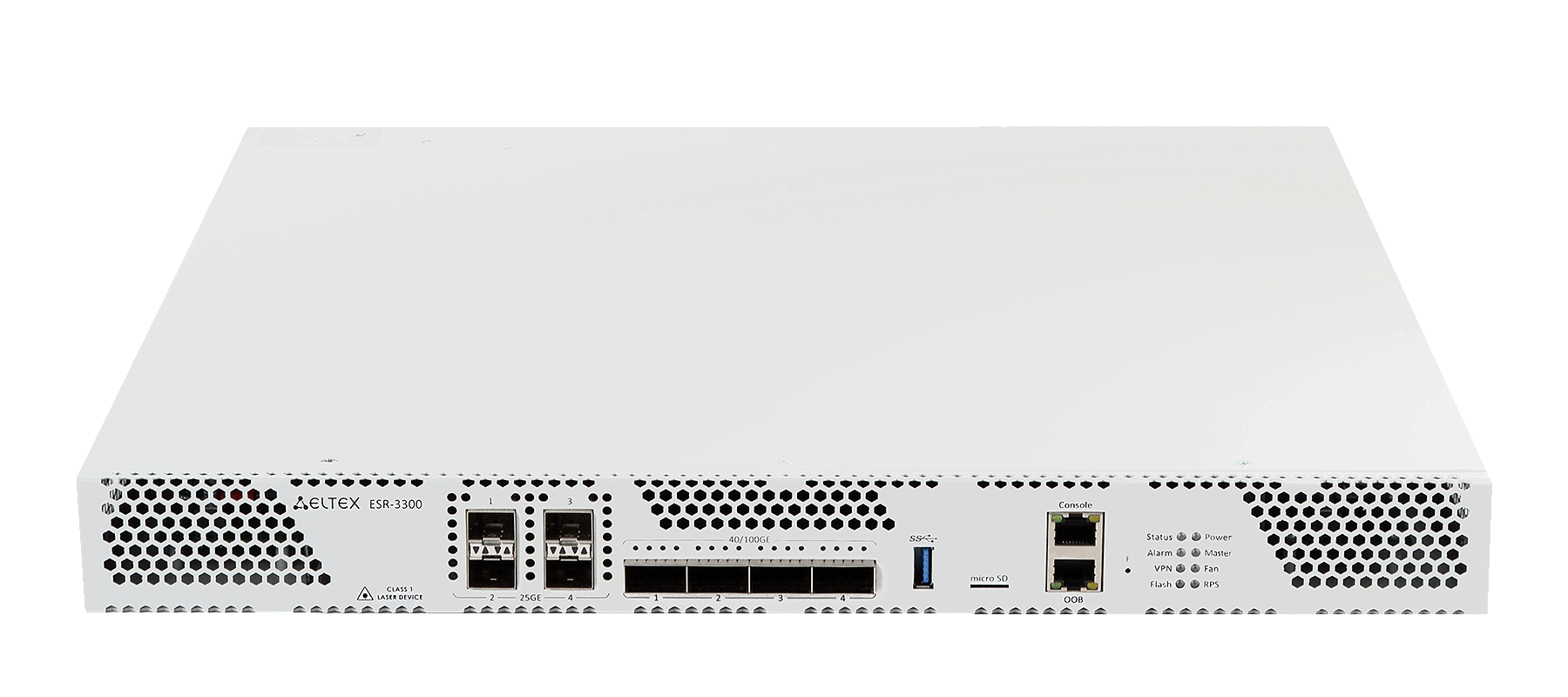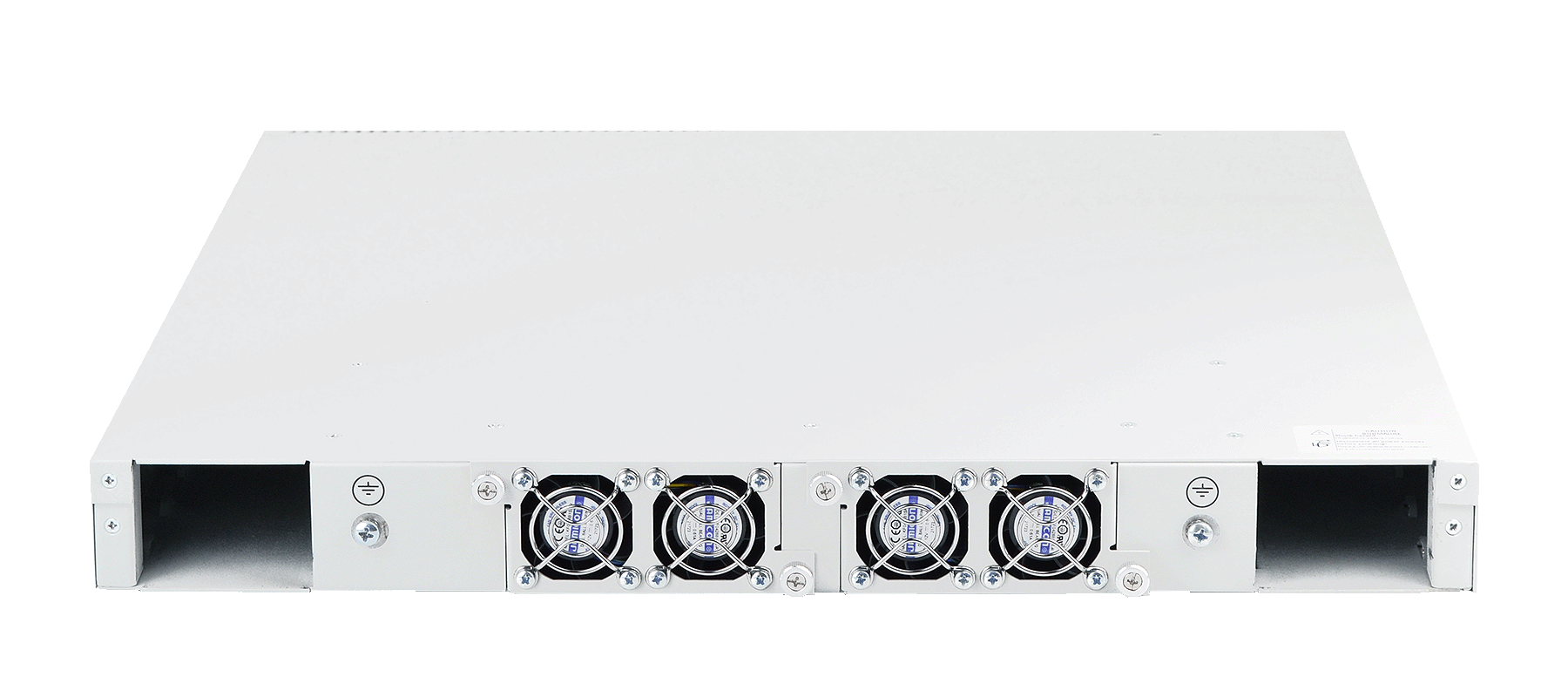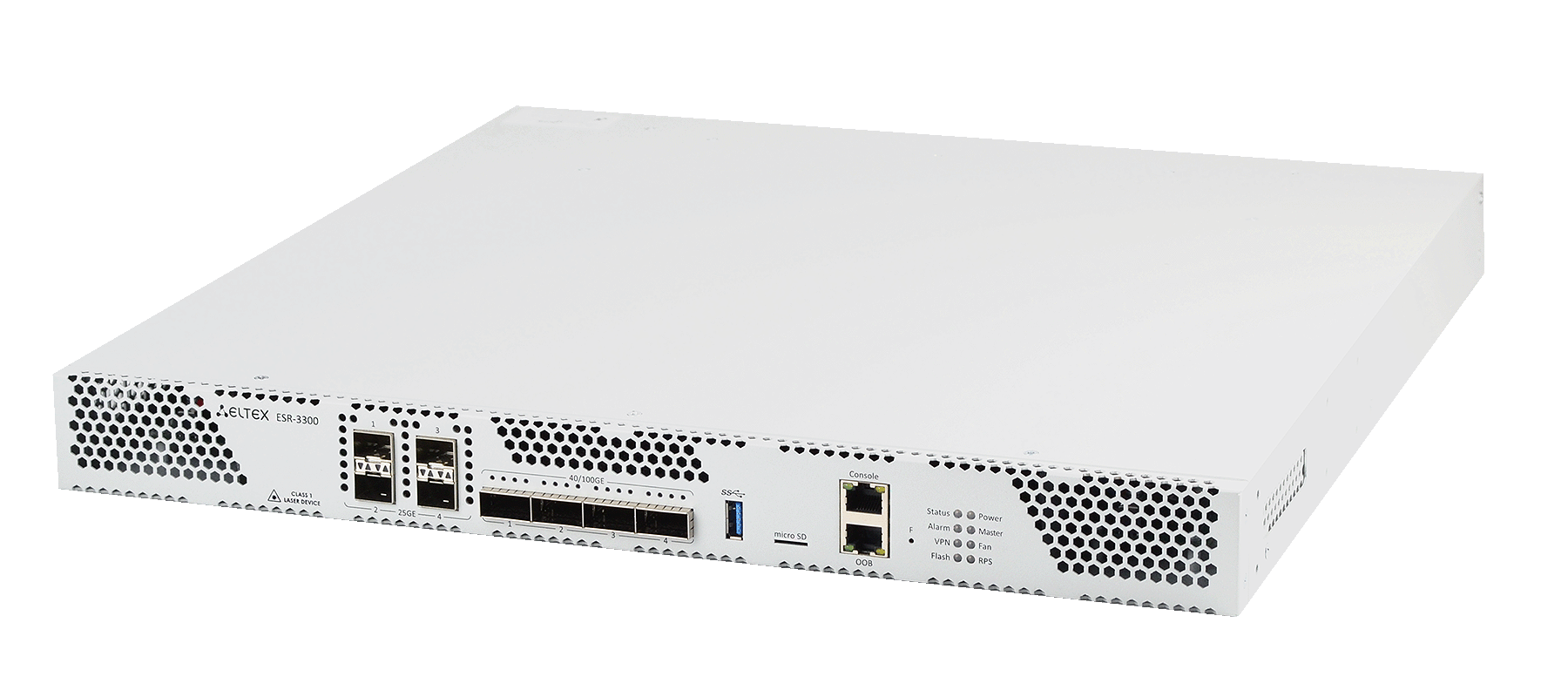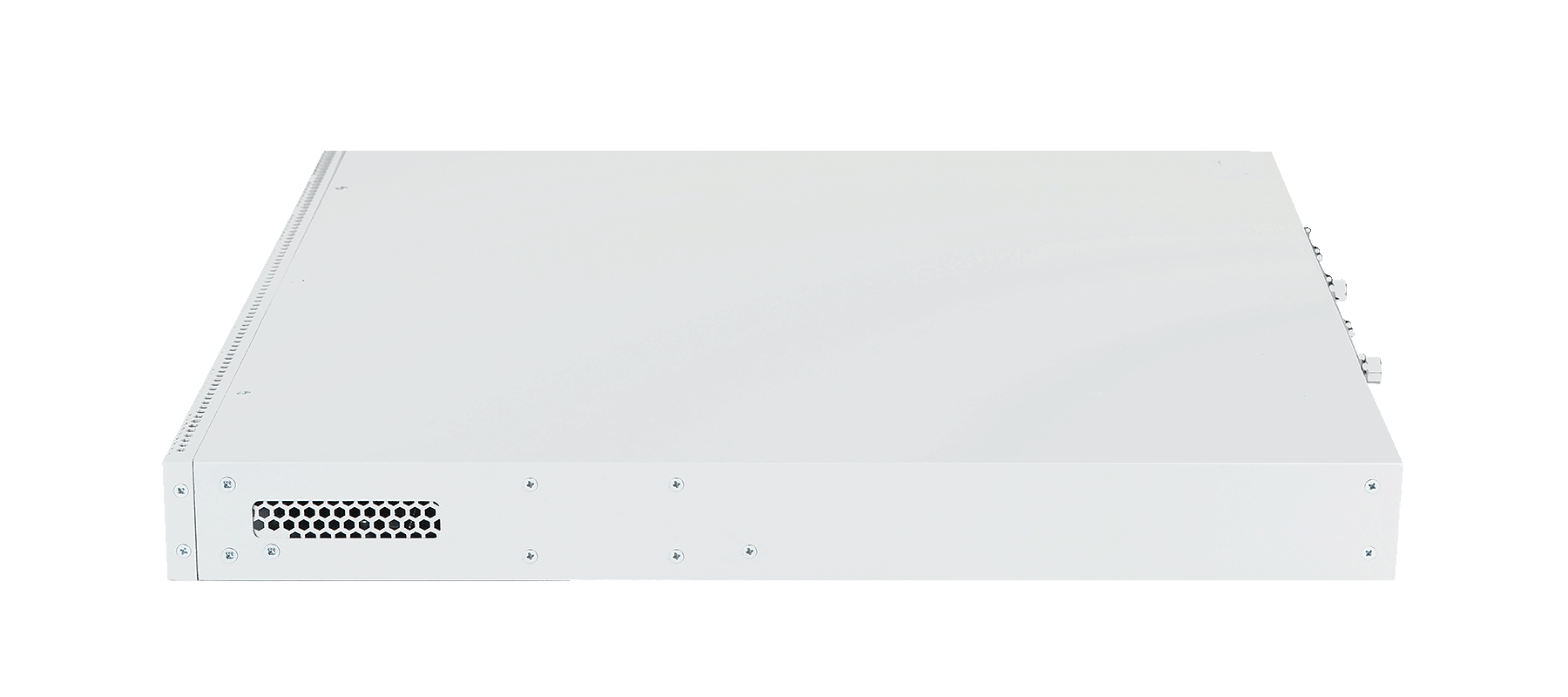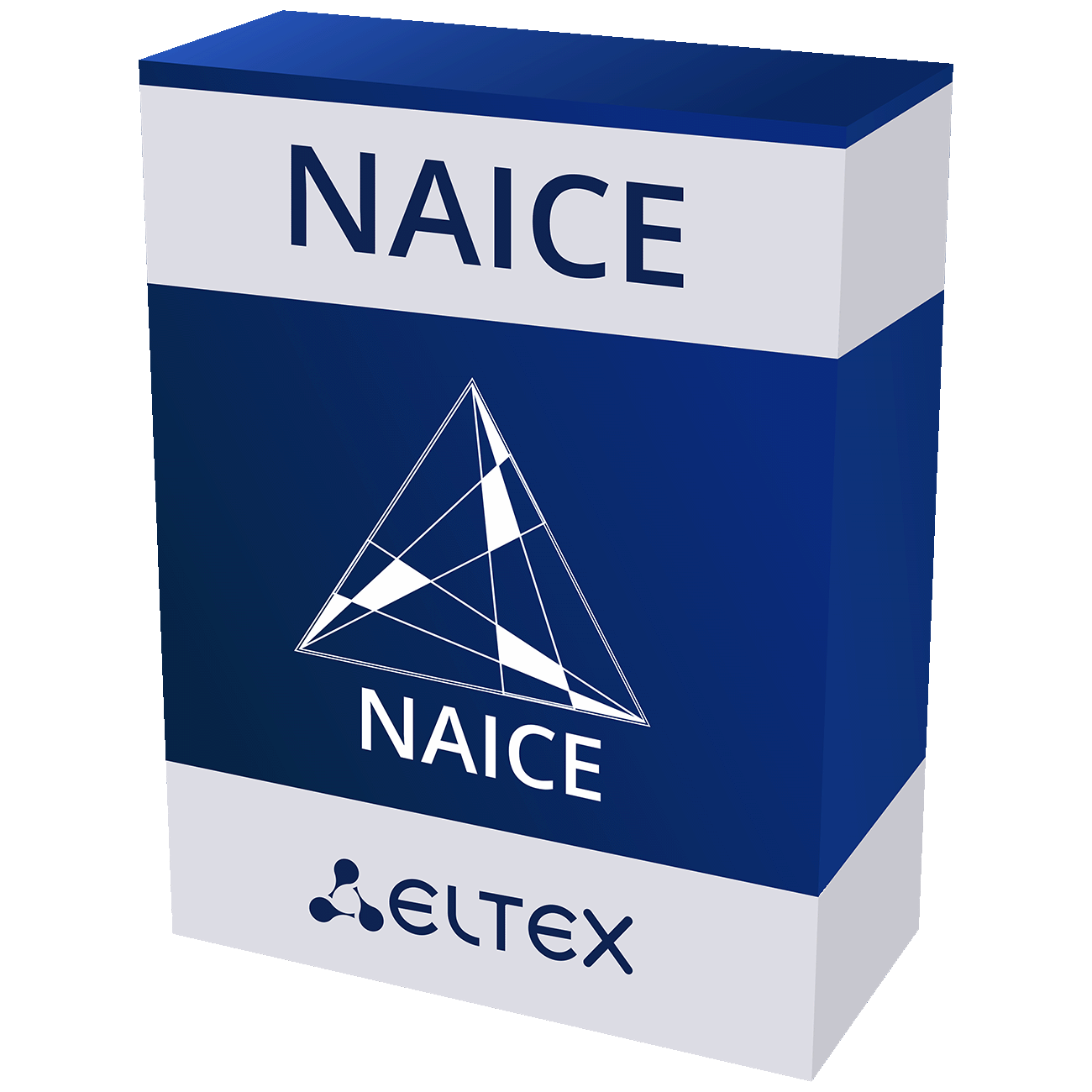Service gateway ESR-3300
- Interfaces:
- 4x25G SFP28, 4x100G QSFP28
- Performance:
- FW - 74,8 Gbps, IPsec VPN - 2,7 Gbps, IPS/IDS - 2,6 Gbps
- Power supply:
- AC/DC


Description
The ESR-3300 service routers are universal hardware platforms capable of performing a wide range of tasks related to network security, data encryption, subscriber termination, etc.
The product line includes models that can be used in networks of various sizes, from enterprise networks to service provider networks and data centers.
The key features of ESR service routers are data processing hardware acceleration means that ensure a high level of performance. Hardware and software processing is distributed among the units of the device.
Advanced warranty and support packages
Extend basic package with additional paid services
Learn more
Specifications
- Interfaces:
- 4x25G SFP28, 4x100G QSFP28
- Firewall:
- 74,8 Gbps
- FIB:
- 1,7M
- Routing:
- RIP/OSPF/IS-IS/BGP
- Tunneling:
- GRE/IPsec IKEv1,2/DMVPN
- GRE tunnels:
- 500
- IPsec tunnels:
- 256
- MPLS
- Security:
- ACL/Firewall/IPS/IDS
- Power supply:
- AC/DC
ECCM
Eltex Cloud Configuration Manager is a centralized system for network equipment management
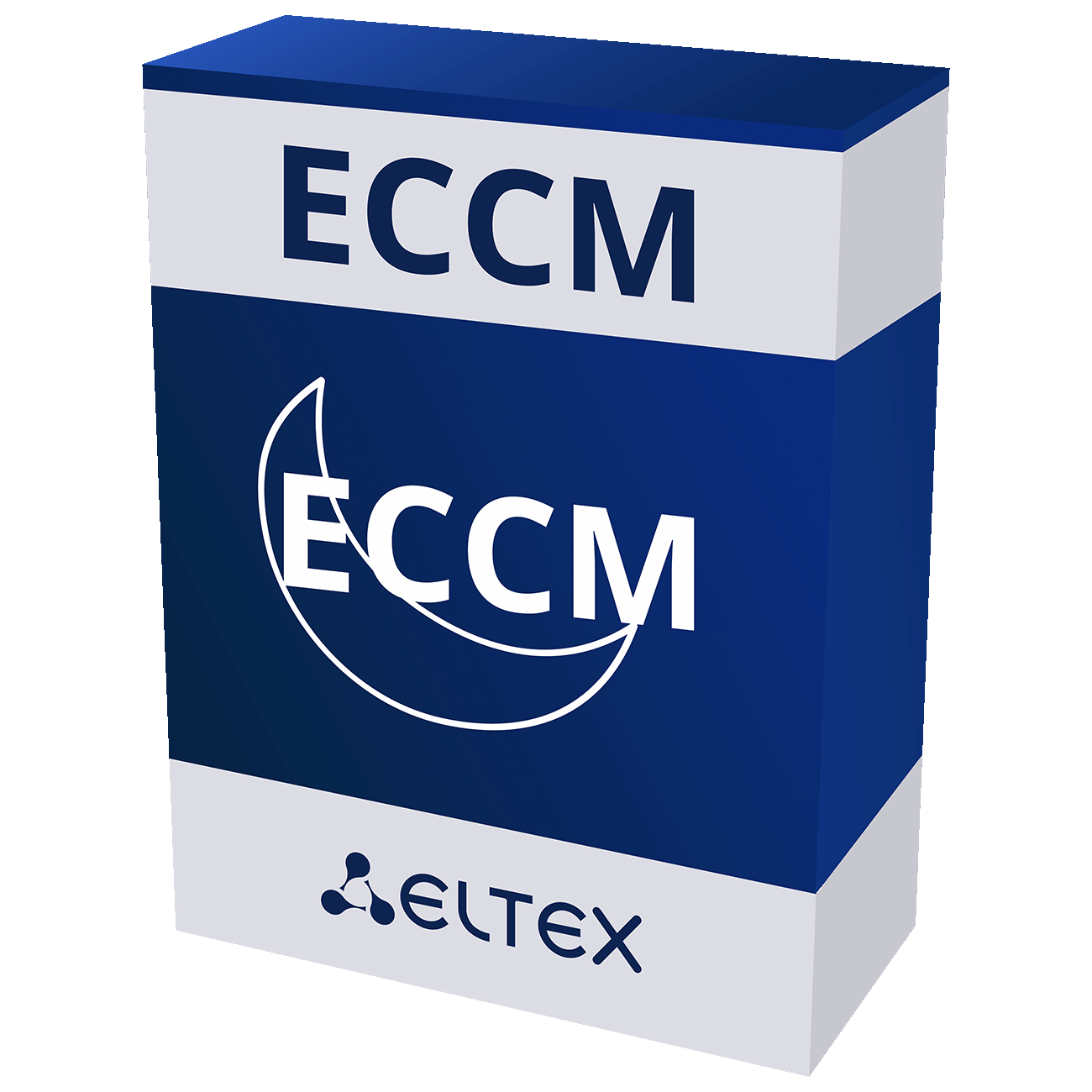
Related products
Components, modules, and software options that are purchased additionally


Free
Basic warranty
Up to 5 years
Extended warranty

